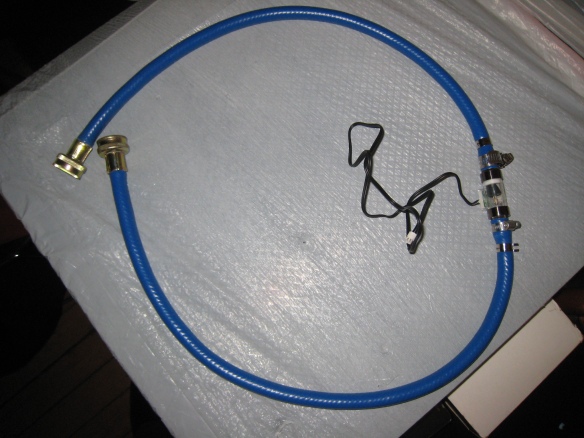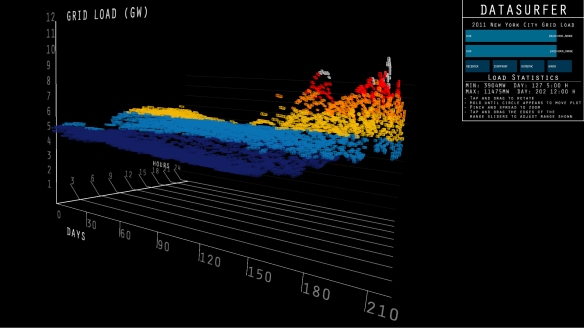From the moment Jon Froehlich and I decided it would be a good idea to use washing machines as a mechanism to judge the relative effect of proximity of a message to the ability to act, a major issue was the possibility of catastrophic failure resulting in a leak.
The first generation of flowmeter-fitting kits, using rigid brass fittings to connect the meter to the washing machine and intake hose, had two major problems: leaks from the fitting-meter interface and the possibility of breaking the acrylic meter housing. The Koolance INS-FM17N flowmeter has nominally ¼” BSP threads, but in actuality, the threads are slightly larger in diameter, not properly fitting with the Swagelok fittings. I attempted to use Loctite 575 thread sealant to remedy this problem, but it was unable to seal the gap and lock the threads because of the large clearance, necessitating the use of matching Koolance BSP fittings with gasket. This had the benefit of also switching from a rigid connection with excessive length to a setup with flexible hose on both sides of the flowmeter. In assembling and testing the rigid connections, I broke a few meters (at $20/each), cracking the acrylic body.
Assembled with 2′ of flexible hose on either side, the problem of torque cracking the body seemed to be resolved, and rated to 70°C (158°F) and 85PSI, the application seemed to be within the failure limits.
Still, I was worried about the possibility of something springing a leak, and every time I went to download the data, I checked everything for leaks.
And one day I came upon a cloud of steam rising from behind a set of washers in Carlyle, and saw water dripping from a rag draped over a meter. Removing the rag I got a jet of hot water shooting up in my face. I quickly closed the valve and replaced the meter. It had cracked along the long axis, I’m unsure of how the crack started, whether it was somehow damaged or if there was a defect in the plastic (a small bubble could be the nucleation site).
About a week later, I found a meter with one of the ends slightly dislodged—it was not leaking, but looked as though the end was going to fail. I replaced that meter, with the final spare, and went to California for the Ebay Data Visualization Expo. Upon return, I found one of the meters had failed in the same way, presumably with the end blowing off and water shooting everywhere. Someone fortunately found it, closed the valve and left the ends dangling. I replaced the meter, and inspected the others, but the possibility of catastrophic failure is really disturbing.
Independent of the fact that in one of the other Carlyle laundry rooms (C1) there was a long-term leak from an outflow hose, and some of the machines leak internally, leaks are totally unacceptable, especially a 3/8″ hose shooting hot water everywhere!
Koolance wants the units back for analysis, and to give me a refund for the price of the replacements, but it’s still disturbing to worry about failure and finding myself in hot water with the administration. So far there has not been a frantic call from facilities, but it’s a worrying thought.
















